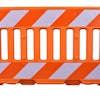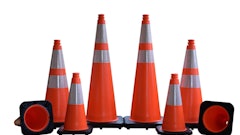Bollards haven't changed much in the hundreds of years they have been used as posts to prevent vehicles from running off roadways. But the challenges of the current era have called for dramatic rethinking of bollard designs and the ways they are used. That is the opinion of Brad Done, Vice President of Reliance Foundry, a leading producer of bollards and other metal castings.
"The biggest change," Done says, "is an increased concern about protecting structures from security threats." Architects and designers are requiring bollards to be installed all around vulnerable properties to create a safe perimeter. In an effort to prevent intrusion, bollards are often reinforced to resist the force of a vehicle being deliberately rammed into a building.
Done points out, "the increased use of bollards around building perimeters has also made it more important to provide bollards that are removable to permit access by emergency or maintenance vehicles." His firm, he says, has experienced growing demand for removable bollards. "When only occasional access is required," he continues, "removable bollards are significantly less costly than bollards that raise and lower by mechanical or hydraulic means."
His firm has recently introduced a new type of bollard designed especially for removable installations. The Reliance Model R-7901 installs into a sleeve set into a concrete foundation. A hinged lid covers the sleeve when the bollard is removed. The lid lies flush with the adjacent pavement to avoid a trip-fall hazard. The bollard's contemporary styling features a domed cap and three annular rings, allowing it to compliment many architectural styles.
The new design also makes bollards responsive to another architectural trend - the need for flexible spaces. Brad Done explains, "designers can pre-install sleeves throughout a plaza or other paved area. Then the property owner can install bollards wherever needed on a temporary basis. For example, the bollards can be used one day to outline a festival place, and the next day to create a parking lot, queuing lanes, or varied levels of security. The posts can also be linked with chains to direct pedestrian traffic."

















